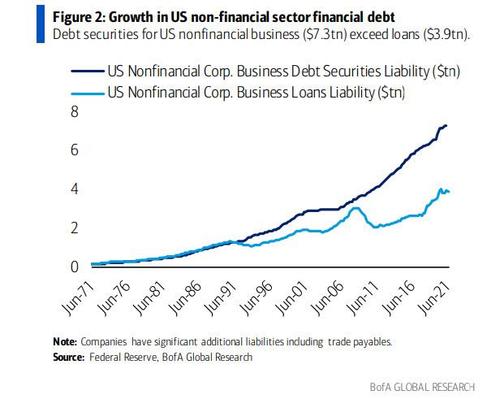The Austin sign code “requires enforcement authorities to examine the content of the message that is conveyed to determine whether a violation has occurred” and is thus facially content-based. McCullen, 573 U.S. at 479 (citing FCC v. League of Women Voters of Cal., 468 U.S. 364, 383 (1984)).
For example, a digital sign displayed outside a Catholic church stating that “Church services start at 9 am on Sunday” would be an on-premises sign that is permitted under the sign code. But if that same sign asked viewers to “Vote for Pro-Life Ballot Measure 123,” the sign would likely be an invalid off-premises sign because it promotes an activity—voting—which is not carried out on church premises. It is thus “apparent . . . that the ordinance distinguishes . . . between permissible and impermissible signs at a particular location by reference to their content.” Metromedia, Inc. v. City of San Diego, 453 U.S. 490, 516 (1981) (plurality opinion) (cleaned up). And if the City decided to allow the sign on the grounds that the Catholic Church is involved in the broader “activity” of supporting pro-life positions, that would make the content discrimination even more obvious, since the City would then have to examine organizations’ overall ideological stands to decide what digital signs they can put up.
Like the distinction between ideological and political signs in Reed, Austin’s sign code requires the government to “identif[y] various categories of signs based on the type of information they convey, then subject[] each category to different restrictions.” 576 U.S. at 159. For instance, Austin’s sign code would prohibit a dry cleaner from displaying a digital sign expressing Hindu beliefs because it is displaying the wrong type of content: content unrelated to dry-cleaning activities. It does not matter that this sign could technically be displayed in a different location, such as a Hindu temple. It is still the subject matter of the sign—Hindu beliefs and not opinions about cleaning—that makes the cleaner’s sign impermissible.
And because it is facially content-based, Austin’s sign code intrinsically treats broad ideological messages differently from other messages. Consider, for instance, a digital sign reading “Question Authority,” “Say No to the War in the Persian Gulf, Call Congress Now” (see City of Ladue v. Gilleo, 512 U.S. 43, 45 (1994)), “China Out of Tibet,” or “Never Trust Anyone Over Thirty.” If the signs are viewed as “advertising a[n] . . . activity . . . not located on the site,” J.A. 52 (for instance, the activity of viewers eventually questioning, calling Congress, advocating Chinese withdrawal, or not trusting), then the digital signs would be allowed nearly nowhere. Perhaps they could appear at a pacifist commune or a Peter Pan fan club (or perhaps not even there), but it is unlikely that these places exist in any great numbers in Austin—people supposedly try to “Keep Austin Weird,” but not that weird.
On the other hand, if some of these signs are viewed as not advertising any activity at all (or if the activities of questioning, believing, or not trusting are seen as happening everywhere, including on the site), they would therefore not be viewed as off-premises, and would be allowed everywhere. Cf. Pet. 17a (“How could one determine whether a digital billboard that said ‘God Loves You’ is on-premises or off-premises?”). Either way, the code would discriminate based on the content of those messages.
Nor can Austin’s sign code be deemed content-neutral on the grounds that it does not expressly single out any particular viewpoint. “The First Amendment’s hostility to content-based regulation [also] extends . . . to prohibition of public discussion of an entire topic.” See Reed, 576 U.S. at 165 (holding that a sign code was content-based because it distinguished ideological, political, and temporary direction signs, even though the categories were not focused on viewpoint). And the code cannot be deemed content-neutral just because the restriction depends on a combination of location and content: When a restriction “describes impermissible [speech] not [only] in terms of time, place, and manner, but [also] in terms of subject matter,” it is content-based. Police Dep’t of City of Chicago v. Mosley, 408 U.S. 92, 99 (1972).
[II.] An “Examine the Content of the Sign” Test Is Consistent with This Court’s Jurisprudence and the Reed Concurrence
This “examine the content of the sign” test is thus called for by Reed and McCullen, and it is also called for by this Court’s pre-Reed cases. For example, in FCC v. League of Women Voters, this Court found a regulation to be content-based because it was “defined solely on the basis of the content of the suppressed speech,” requiring “enforcement authorities [to] necessarily examine the content of the message that is conveyed to determine whether the views expressed concern ‘controversial issues of public importance.'” 468 U.S. at 383.
Similarly, in Arkansas Writers’ Project, Inc. v. Ragland, the Court held that a tax exemption for magazines “uniformly devoted to religion or sports” was content-based because “[i]n order to determine whether a magazine is subject to sales tax, Arkansas’ ‘enforcement authorities must necessarily examine the content of the message that is conveyed.'” 481 U.S. 221, 230 (1987) (quoting League of Women Voters, 468 U.S. at 383). Here too, Austin officials must examine signs to see if they direct viewers to off-premises activity.
In Forsyth County v. Nationalist Movement, the Court likewise ruled that a security fee requirement for parades was content-based because “in order to assess accurately the cost of security for parade participants, the administrator ‘must necessarily examine the content of the message that is conveyed,’ estimate the response of others to that content, and judge the number of police necessary to meet that response.” 505 U.S. 123, 134 (1992) (quoting Arkansas Writers’ Project, 481 U.S. at 230). And in Regan v. Time, Inc., the Court ruled that, when a law banning reproductions of currency exempted newsworthy or educational uses, it was content-based:
A determination concerning the newsworthiness or educational value of a photograph cannot help but be based on the content of the photograph and the message it delivers. Under the statute, one photographic reproduction will be allowed and another disallowed solely because the Government determines that the message being conveyed in the one is newsworthy or educational while the message imparted by the other is not.
468 U.S. 641, 648 (1984).
Austin’s sign code similarly “cannot help but be based on the content of the [sign] and the message it delivers.” See id. Under the Austin sign code, one sign will be allowed and another disallowed “solely because the Government determines that the message being conveyed in the one is [advertising activities on the premises in which it is displayed] while the message imparted by the other is not.” Id.
Of course, Austin “has ample content neutral options available to resolve the problems of safety and aesthetics.” Reed, 576 U.S. at 173. Many sign regulations “would not be content based,” including certain “[r]ules distinguishing between on-premises and off premises-signs.” Id. at 174-75 (Alito, J., concurring). For example, an on/off-premises distinction that “favor[ed] [signs] used solely in the business of their owners [or expressed their owners’ preferred nonbusiness views], as distinguished from [signs] which are operated for hire by [third parties]” would distinguish between on- and off-premises signs based on whether signs are rented out to off-premises speakers, not based on their content. Railway Express Agency, Inc. v. New York, 336 U.S. 106, 116 (1949) (Jackson, J., concurring). But, as discussed above, Austin’s sign code does focus on content.
[III.] Austin’s Sign Code Favors Commercial Speech Over Noncommercial Speech
Under Austin’s sign code, commercial premises may put up digital signs related to their business but generally may not put up noncommercial messages. For example, Austin’s sign code would let a restaurant owner post a digital sign saying, “Buy our coffee,” but not one saying “Attend the Anti-War Rally Tomorrow Downtown,” given that the anti-war message is unrelated to the activity on the premises. See Solantic, LLC v. City of Neptune Beach, 410 F.3d 1250, 1264 (11th Cir. 2005) (striking down a sign code that would allow a neon sign reading “Parking in Back” on a homeowner’s premises to be posted indefinitely, but not allow a political message such as “Bring Our Troops Home”).
The sign code thus sharply limits the digital signs available for noncommercial speech, since far more premises are dedicated to selling commercial goods than are dedicated to noncommercial ideological activities. Because “noncommercial signage, such as a political advertisement or religious proclamation, rarely has a locational component, it is almost always off-premises in a literal sense.” Brian J. Connolly & Alan C. Weinstein, Sign Regulation After Reed: Suggestions for Coping with Legal Uncertainty, 47 Urb. Law. 569, 592 (2015). Yet cities “may not conclude that the communication of commercial information concerning goods and services connected with a particular site is of greater value than the communication of noncommercial messages.” Metromedia, 453 U.S. at 516 (plurality opinion).
And the sign code sharply limits noncommercial counterspeech to commercial speech. Apple, for instance, can advertise its brand and products from signs on any one of its many stores. But organizations or individuals who want to criticize Apple’s data privacy practices could not rent space on a digital sign across the street unless they actually rented the whole building and used it as a place of operations. Likewise, any gun store could have a digital sign advertising guns, but anti-gun organizations could not rent a digital sign to display a “Vote for Gun Control” message.
To be sure, a facially content-neutral law does not become content-based merely because it has a disparate impact, McCullen, 573 U.S. at 480—but for the reasons stated above, Austin’s sign code is not facially content-neutral. The sign code’s practical preference for commercial speech over noncommercial speech is thus relevant to this Court’s analysis.
[IV.] Austin’s Sign Code Favors Popular, Majoritarian Noncommercial Speech Over Unpopular, Minority Noncommercial Speech
Austin’s sign code also prefers noncommercial speech related to popular activities—for instance, popular religious worship services—over noncommercial speech related to unpopular activities. Popular speech, by definition, is an “activity” engaged in at more premises in Austin than is unpopular speech.
Thus, for example, there are about 800 Christian churches and nonprofits in the City of Austin. In contrast, there are only about 30 Jewish nonprofit organizations, 20 Buddhist organizations, and 12 Islamic organizations. So Christian groups will necessarily occupy more premises than will Jewish, Buddhist, and Islamic groups, and will therefore have more space on which they are allowed to express their religious messages on digital signs.
Indeed, religious (or antireligious) groups with no premises at all in Austin would be entirely precluded from posting digital signs discussing their beliefs. And Austin’s sign code similarly privileges popular political groups, which are more likely to have existing premises in Austin, over emerging, small, or out-of-town political groups.
[V.] Austin’s Sign Ordinance Prevents Speakers from Remaining Anonymous, and Thus Unconstitutionally Chills Speech
Many controversial groups might not want to publicly identify their places of business in a way visible to any passerby—they might worry that such identification may draw vandalism of their offices, or at least harassment of their employees or visitors. Yet any such group in Austin would be entirely unable to put up digital signs and still remain anonymous: Under Austin’s sign code, any legal digitized ideological sign implicitly signals that activities related to this ideology are taking place at that very location. Such a “ban on anonymous speech violate[s] the First Amendment,” Buckley v. Am. Const. L. Found., Inc., 525 U.S. 182, 199 (1999) (citing McIntyre v. Ohio Elections Comm’n, 514 U.S. 334, 347, 357 (1995)), because “the First Amendment, as originally understood, protects anonymous [speech].” McIntyre, 514 U.S. at 359 (Thomas, J., concurring).
In this respect, Austin’s code is like the requirement that petition circulators wear identification badges, which was struck down in Buckley v. Am. Const. L. Found., Inc., 525 U.S. at 200. The “badge requirement,” this Court held, “expose[s] the circulator to the risk of ‘heat of the moment’ harassment” and thus “discourages participation in the petition circulation process by forcing name identification without sufficient cause.” Id. at 199, 200. Likewise, the on-premises requirement for digital signs risks heated, angry reactions from passersby, and thus discourages unpopular organizations from engaging in such speech “by forcing . . . identification” of what is happening at the premises. Id. at 200.
Take a digital sign displaying the message “Be Good Without God—Join the Atheist Movement.” Under the sign code, such a sign can only be displayed on premises that conduct atheist activities. In a town (perhaps not Austin, but one can imagine others) where atheism is highly frowned on, the presence of the sign can open the organization and its employees to “retaliation . . . at the hand of an intolerant society.” McIntyre, 514 U.S. at 357. Yet the group would be unable to diminish the risk of such retaliation by renting a digital sign elsewhere in town, because the sign code would forbid such “off-premises” speech.
Conclusion
Austin’s sign code violates the First Amendment. It is unconstitutional under McCullen, Reed, and other precedents from this Court because it distinguishes between signs based on their content. It impermissibly prefers commercial speech over noncommercial speech, and popular speech over unpopular speech. And it forces organizations that want to use digital signs to visually identify the premises at which their employees and activists work, thus tending to chill unpopular speech. Amicus therefore asks that this Court affirm the judgment of the Fifth Circuit.









